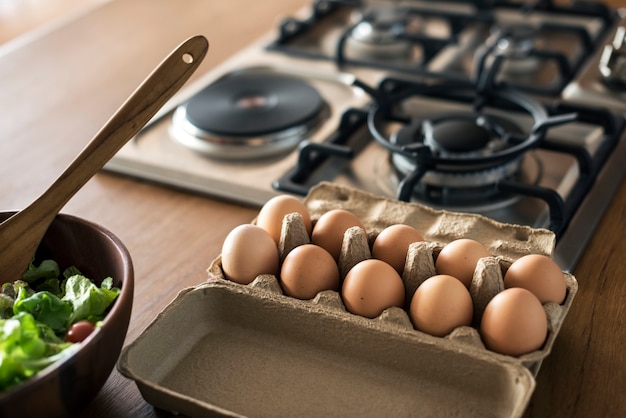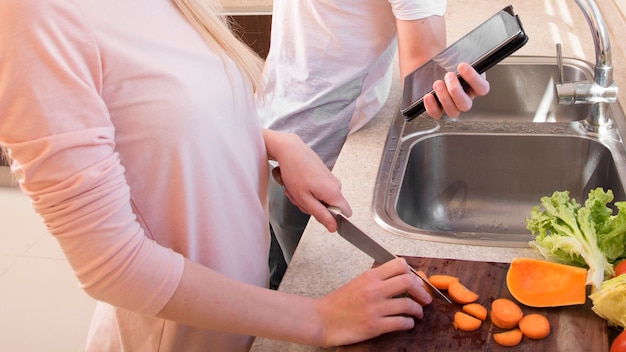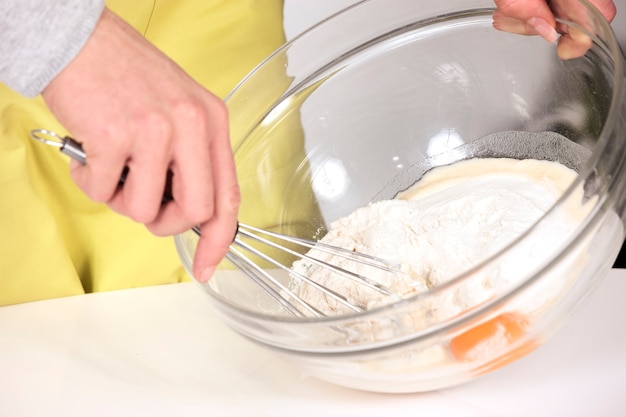(Part 1) The Basics: Choosing the Right Eggs

1.1 Freshness is Key:
Think of it this way: fresh eggs are like the Beyoncé of the egg world – they're simply better. Older eggs, on the other hand, can sometimes lead to a rubbery texture. Ideally, you want to use eggs that are within a week or two of their "best before" date. Trust me, your taste buds will thank you for it.
1.2 Size Matters:
Don't underestimate the power of size! Smaller eggs cook faster than their larger counterparts. It's all about that surface area-to-volume ratio, you see. So, if you're working with jumbo eggs, be prepared to adjust your cooking times accordingly.
1.3 The Chilling Factor:
Ever wondered why you should refrigerate your eggs? It's not just for keeping them fresh; it also helps to ensure a more even cook in the microwave. So, pop those eggs in the fridge for at least 30 minutes before you start cooking. It's a simple step that makes a big difference.
(Part 2) Essential Equipment:

2.1 Microwave-Safe Mugs: Your Culinary Canvas:
A good microwave-safe mug is your partner in crime when it comes to microwave egg cooking. It's your culinary canvas, the vessel for your egg creations. Look for a mug that's deep enough to accommodate your eggs without overflowing. And, of course, make sure it's specifically designed for microwave use – safety first, folks!
2.2 The Humble Fork:
A fork isn't just for eating; it's also a key player in the microwave egg game. You'll need it to whisk up your egg mixture, create that lovely airy texture, and to give your eggs a quick stir during cooking.
2.3 A Small Bowl:
This is your prep station, a small bowl for whisking your eggs before adding them to your mug, especially if you're planning a scrambled egg masterpiece. It helps ensure that you have a smooth and even consistency before the microwave magic begins.
2.4 Paper Towels:
Ah, paper towels, the unsung heroes of microwave cooking. They're not just for cleaning up spills; they're also essential for covering your mug during cooking, acting as a shield against splattering and ensuring a more controlled cooking process.
(Part 3) The Simple Scrambled Egg:

3.1 The Art of the Whisk:
Start by cracking your eggs into a small bowl. Now, the fun part – use your trusty fork to whisk those eggs together until they're light and frothy. This simple step helps create a beautifully fluffy scrambled egg.
3.2 Seasoning Secrets:
Now it's time to add a pinch of salt and pepper for flavour. For an extra touch of richness, a little splash of milk or cream can work wonders. Experiment with different flavours – maybe a dash of paprika, a sprinkle of herbs, or a touch of cheese for a cheesy scramble.
3.3 Microwave Time:
Pour your egg mixture into your microwave-safe mug and cover it loosely with a paper towel. Start with a 30-second microwave session. After that, it's time for inspection! Check the consistency and adjust your cooking time in 10-15 second intervals until your eggs reach the desired level of doneness.
3.4 Stir, Stir, Stir:
A quick stir halfway through the cooking process is key to ensuring even cooking. Give those eggs a gentle swirl to ensure they don't stick to the mug and cook evenly. Remember, patience is a virtue when it comes to microwaving eggs. Don't rush the process!
3.5 Rest and Digest:
After your scrambled eggs are cooked, let them rest for a minute or two in the mug. This allows the heat to distribute evenly, resulting in a smoother, more delicious final product.
(Part 4) The Perfect poached egg:
poached eggs in the microwave might seem like a culinary feat, but with a little practice, you can master this technique and impress your breakfast companions. The secret lies in creating a steamy water bath that gently cooks the egg to perfection.
4.1 The Water Bath Technique:
Add about half a cup of water to your microwave-safe mug. Microwave it on high for 30 seconds to a minute, until it's simmering. This creates the steamy environment you need for a perfect poached egg.
4.2 Cracking the Code:
Crack your egg into a small bowl, being extra careful to keep the yolk intact. You want that beautiful, runny yolk that oozes out when you break into your poached egg.
4.3 The Plunge:
Now, for the dramatic part – gently slide the egg into the simmering water. Make sure it sits comfortably at the bottom of the mug. You want to avoid any splashing or sudden movements that might disrupt the delicate egg.
4.4 Cover and Cook:
Cover the mug with a paper towel, and microwave for 30-45 seconds if you prefer a runny yolk. For a firmer yolk, cook for up to 1 minute.
4.5 The Patience Game:
Remember, good things come to those who wait. Let the egg rest for a minute or two in the mug after cooking. This helps the yolk settle and prevents it from exploding when you transfer it to your plate.
(Part 5) The Sunny-Side-Up Miracle:
The sunny-side-up egg – a breakfast icon that's surprisingly easy to achieve in the microwave. Here's how to avoid that dreaded rubbery yolk and achieve that perfectly runny centre.
5.1 The Water Trick:
Add a tablespoon or two of water to your mug. This steamy trick helps cook the egg evenly without drying it out.
5.2 Crack Carefully:
Crack your egg directly into the mug, ensuring the yolk is centred. You want that vibrant yellow yolk to be the star of the show.
5.3 Cover and Cook:
Cover the mug with a paper towel, and microwave for 20-30 seconds, depending on your desired level of doneness. Remember, less is more when it comes to cooking time for sunny-side-up eggs.
5.4 Watch Out for Splashes:
Let's be honest, microwave eggs can be a bit unpredictable. Be prepared for a few splashes. A plate underneath the mug can catch any drips and save you from a messy situation.
5.5 Let It Rest:
After cooking, let the egg rest for a minute or two before carefully transferring it to your plate. This allows the heat to distribute evenly and prevents any unexpected yolk explosions.
(Part 6) The Art of Mastering Cooking Times:
Every microwave is a little different, so finding the perfect cooking time requires a bit of experimentation. But don't worry, I've got you covered with a general guide to get you started.
6.1 Scrambled Eggs:
Start with 30 seconds, then add 10-15 seconds increments until your scrambled eggs reach your desired level of doneness.
6.2 Poached Eggs:
Aim for 30-45 seconds for a runny yolk or up to 1 minute for a firmer yolk.
6.3 Sunny-Side-Up Eggs:
20-30 seconds is a good starting point, but adjust based on how you like your yolks.
(Part 7) Microwave Egg Troubleshooting:
We've all been there – those times when our microwave egg creations don't quite live up to expectations. But don't despair! Here's a guide to troubleshooting some common microwave egg problems.
7.1 Rubber or Overcooked Yolks:
If your yolks are rubbery or overcooked, it's a sign that you've probably overdone it with the cooking time. Reduce your next cooking time by a few seconds.
7.2 Undercooked Yolks:
On the other hand, if your yolks are still runny and undercooked, increase your cooking time in 10-15 second increments until they reach your desired consistency.
7.3 Exploded Eggs:
Oh, those dreaded egg explosions! This is often caused by overcooking or using eggs that are too old. Stick to fresh eggs and keep a close eye on your cooking times to avoid a messy situation.
7.4 Uneven Cooking:
If you're finding that your eggs aren't cooking evenly, make sure to stir them halfway through the cooking process. Also, consider adjusting the placement of your mug in the microwave. Sometimes, a slight shift can make all the difference.
(Part 8) Microwave Egg Recipes:
8.1 The Easy Omelet:
For a quick and satisfying omelet, whisk together two eggs, a tablespoon of milk, a pinch of salt and pepper, and your favourite fillings. Think cheese, veggies, ham, or anything that tickles your fancy. Pour the mixture into your microwave-safe mug, and cook for 30-45 seconds. Easy peasy!
8.2 Egg-cellent Breakfast Burrito:
Microwave a tortilla until it's soft and pliable. Then, fill it with your favourite breakfast ingredients – scrambled eggs, cheese, beans, salsa, the possibilities are endless! Fold it up, and enjoy a delicious breakfast burrito in minutes.
8.3 The Savoury egg salad:
Hard boil two eggs in the microwave (see Part 9 for details). Chop them up and mix with mayonnaise, mustard, chopped celery, onion, and salt and pepper. Serve on toast, in a sandwich, or even as a filling for a salad.
8.4 The Sweet Egg Pudding:
For a delightful dessert, whisk two eggs with a cup of milk, a tablespoon of sugar, and a pinch of cinnamon. Pour the mixture into a ramekin and microwave for 1-2 minutes until it sets. Top with fresh berries or whipped cream for a truly decadent treat.
(Part 9) Microwave hard-boiled eggs:
Yes, you can even hard boil eggs in the microwave! This method is significantly quicker and easier than traditional boiling, but it does require a little practice.
9.1 The Water Trick:
Fill a microwave-safe mug with about half a cup of water.
9.2 Crack and Cover:
Carefully crack the eggs into the mug, making sure they're submerged in water. Cover the mug with a paper towel.
9.3 The Microwave Magic:
Microwave on high for 4-6 minutes for medium-sized eggs. To check the doneness, pierce the yolk with a fork. If it's still runny, cook for another 30 seconds to a minute.
9.4 Cool Down Time:
Once the eggs are cooked, transfer them to a bowl of ice water to stop the cooking process.
9.5 Peel With Ease:
After the eggs have cooled down, peel them and enjoy! You'll find that the shells come off more easily after the microwave treatment.
FAQs:
1. What if my eggs explode in the microwave?
Exploding eggs are a common concern with microwave cooking, but it's usually due to overcooking or using eggs that are too old. Always use fresh eggs, and keep a close eye on your cooking times.
2. Can I microwave eggs in their shell?
It's not recommended to microwave eggs in their shell. The shell can explode, creating a messy and potentially dangerous situation.
3. How do I know when my eggs are cooked to my liking?
The yolk is your key indicator! A runny yolk will be soft and jiggly, while a firmer yolk will be more solid.
4. What are the health benefits of eating eggs?
Eggs are a powerhouse of nutrients, packed with protein, vitamins, and minerals. They're also a good source of choline, which is essential for brain health.
5. Can I reheat my cooked eggs in the microwave?
Absolutely! You can reheat your cooked eggs in the microwave, but be careful not to overcook them. You can also reheat eggs in a skillet on the stovetop for a crispier texture.
Everyone is watching

Corn on the Cob: The Ultimate Guide to Perfectly Cooked Ears
Healthy MealsAh, corn on the cob. Just the name evokes images of sunny days, barbecues, and that sweet, juicy flavour that ...

Scallops: The Ultimate Guide to Perfect Cooking
Healthy MealsAh, scallops. Those delicate, sweet, and utterly delicious morsels of the sea. They hold a special place in my...

Spaghetti Squash: The Ultimate Guide to Cooking and Serving
Healthy MealsRemember that time you saw spaghetti squash at the supermarket, looking all bumpy and strange, and thought, "W...

Salmon Cooking Times: Perfect Guide for Every Recipe
Healthy MealsLet me tell you, cooking salmon is an art form. It's all about getting that perfect balance: juicy and tender,...

Ham Cooking Time: How Long to Bake, Smoke, or Boil a Delicious Ham
Healthy MealsAh, ham. It's a classic, isn't it? A real crowd-pleaser, especially around holidays. And when done right, it'...
